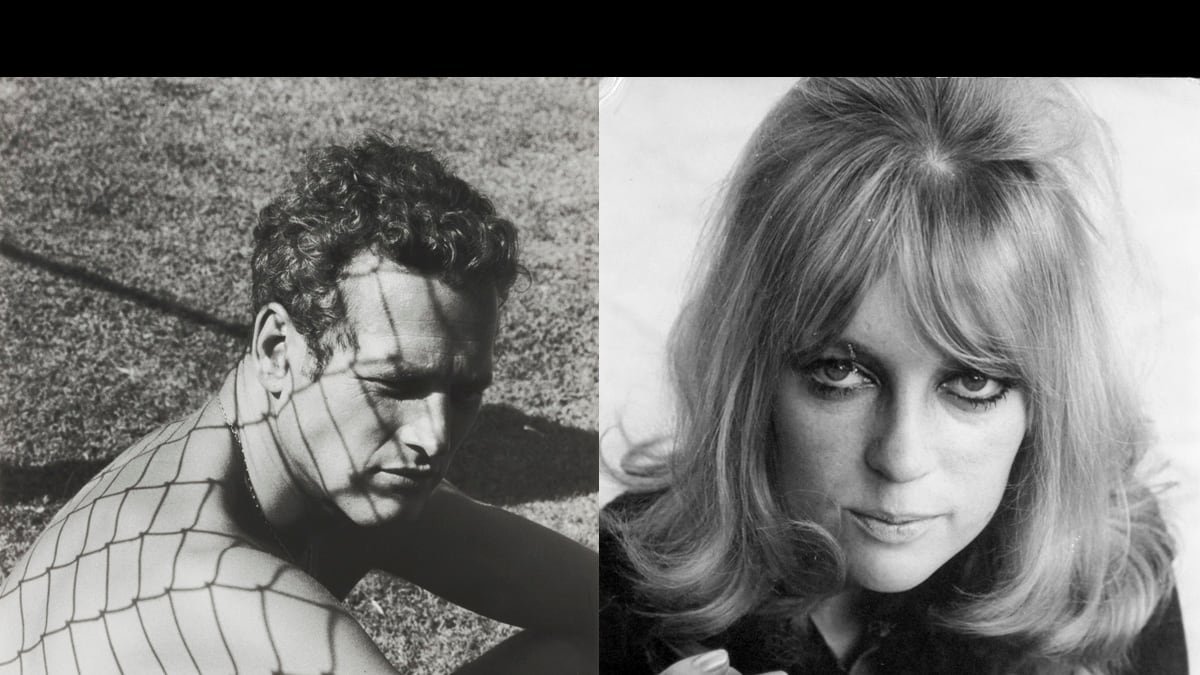Dennis Hopper, the legendary American actor and director who died in 2010, was a person who, in the words of his daughter, “liked things to be bigger and stronger.” His film work reveals as much: he commanded the screen in Easy Rider, Apocalypse Now, and Blue Velvet.

But his photographic work, on view this week at a new show at Gagosian’s Madison Avenue gallery in New York, shows a side of Hopper that is smaller, quieter, and more vulnerable.
Hopper took the photographs that make up this show, entitled The Lost Album, between 1961 to 1967, just before he began work on Easy Rider. His wife Brooke Hayward gave him a Nikon in 1961, which, she recalls in an interview in the accompanying catalog, “he never ever, ever, for the rest of my life with him—we got married and then divorced in 1968 or 1969—he never took it off."
The photographs were originally shown in 1971, at Hopper’s first show at the Fort Worth Museum—and hadn’t been seen again until his daughter, Marin, discovered the original prints in Hopper’s garage during the summer of 2010. “The show is very legendarily famous to me,” she tells us. “I had heard about it my whole life, but I had never seen them. I didn’t know they still existed.” The Gagosian show is the first time they’ve been shown in their original form in the United States since then (certain better-known images of the pack have been highlighted in other exhibitions since, such as Hopper’s retrospective at MOCA in 2009). But now, they’re assembled the way Hopper originally intended them: each image is slightly larger than the size of a postcard, and they’re organized in random groups that tell a story about his mix of interests ranging from film and art to politics and fashion.
On one level, these are social pictures: scrapbook items he might have used to remind himself whom he was hanging out with on any given day. But they’re also portraits of artists and actors in their salad days: candid windows into a gang of the attractive young artists that hung around the Ferus Gallery in L.A. There’s Robert Rauschenberg sticking out his tongue in a perfectly tailored gray suit (1966); Claes Oldenberg in front of his immaculate rows of white cake slices (1966); Ed Ruscha, wild-eyed and handsome in front of a neon “TV Radio Service” sign in 1964; and Jasper Johns sitting on his porch (1964). “He had an entree, and I feel that he was very much embraced by the people that he took pictures of,” Marin Hopper says. “You see how they affected him—and how he affected them.”
Click Below for a Gallery of Hopper’s Images From 'The Lost Album'

At some point during those early years, Hopper’s role as a photographer began to evolve. He transitioned from simply capturing the people in his world to becoming, more consciously, a documenter of his times. He captured the bright, poplike signage on the streets, a seamstress at work in the window of her shop, a construction worker perched on a curb in downtown Los Angeles. In 1961, he photographed his television’s image of the Apollo 11 lunar landing, and in 1965, he traveled to Alabama to take part in the civil-rights march from Selma to Montgomery, where he photographed Martin Luther King Jr. “He really did think he was documenting something unusual and that things were really changing,” Marin Hopper says. “He knew it was one of those periods of time that needed to be captured. He knew he was documenting something really important to leave behind as his legacy.”
Yet Hopper saw each of his photographs not only as documentations of the time, but also as testament that art was everywhere: on the TV set, at dinner parties, on the street. Hopper called himself a “Duchampian finger-pointer by choice,” agreeing that “the artist of the future will merely point his finger and say it’s art—and it will be art.” After all, Hopper called his photographs “tablets of time, unending and hopefully a way for one to enjoy looking at life in a new light—that art is everywhere, in every corner that you choose to frame and not just ignore and walk by.”
For more, visit The Daily Beast’s Picture Department blog for a conversation with Tom Folsom, author of Hopper: A Journey Into the American Dream. Also visit the official website of the Dennis Hopper Art Trust and read Dennis Hopper: The Lost Album.






